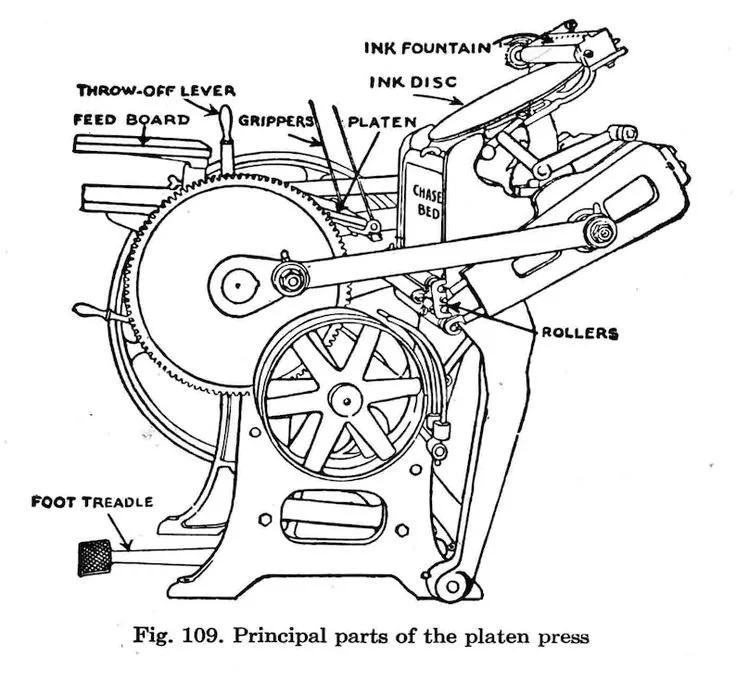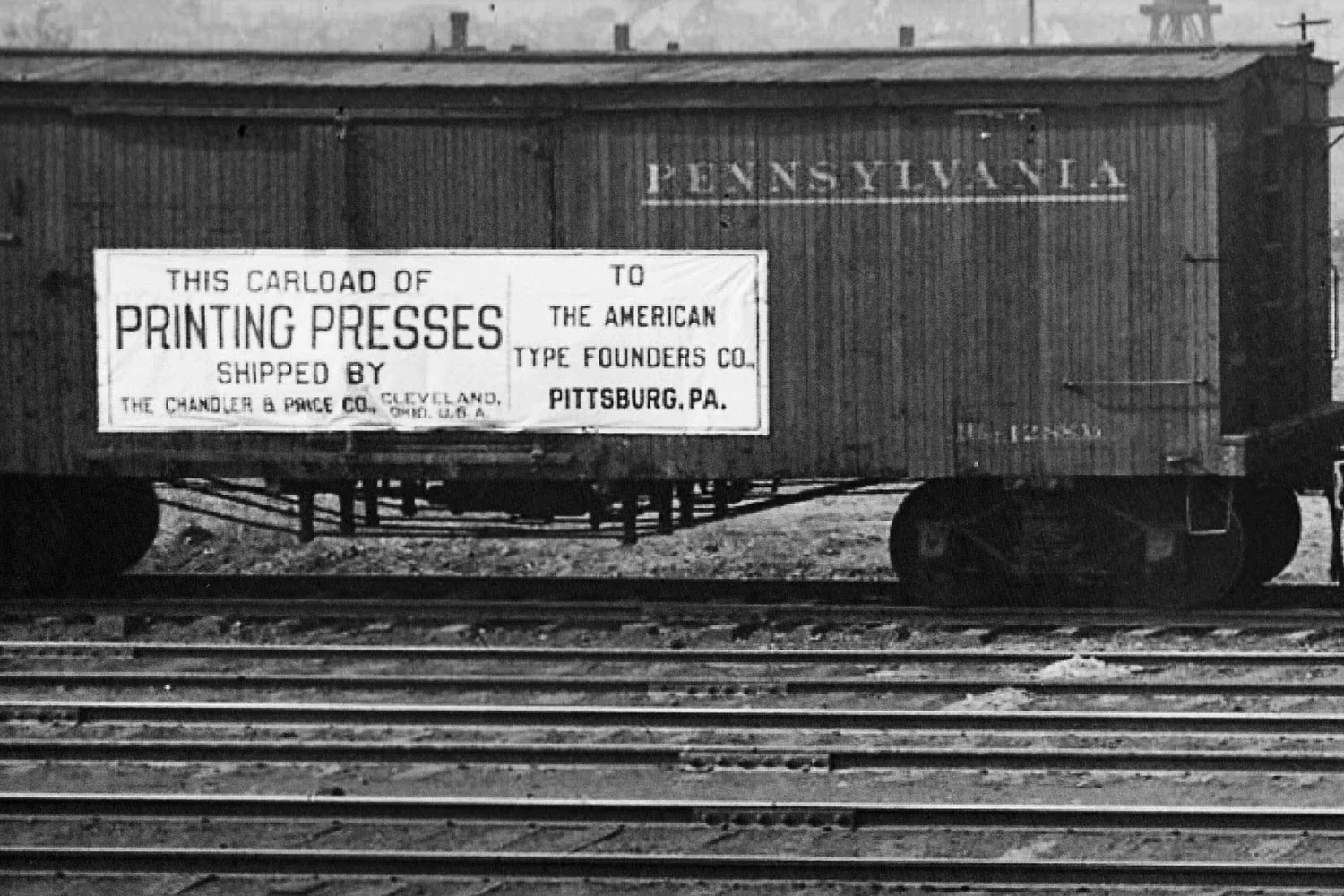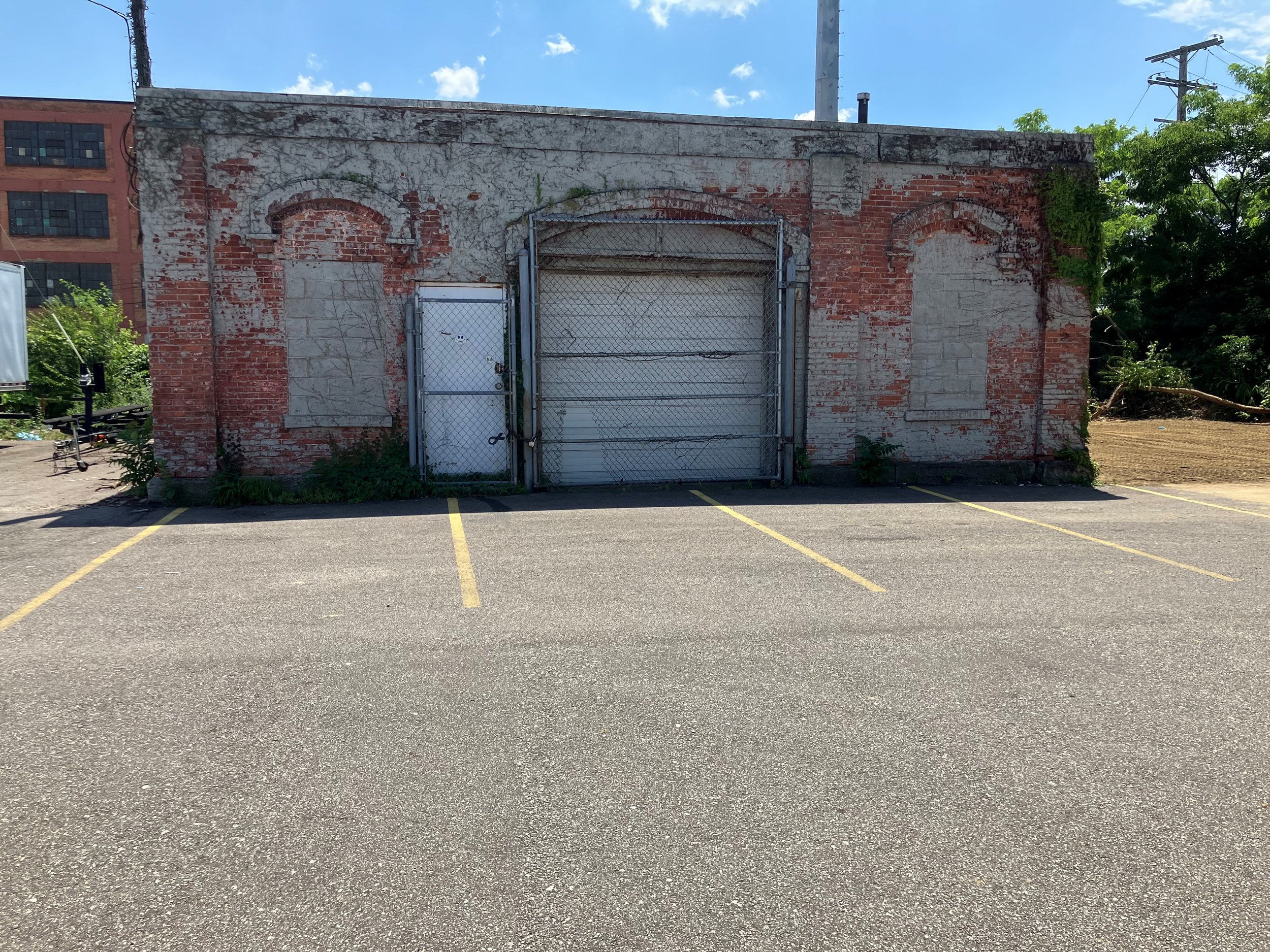The Price-Briggs Carriage House
A Dunhamsburgh Story
Duncan Virostko, Museum Assistant
The building had been staring us all in the face for years. An ornate, if well-worn, brick building sitting in an awkward position in roughly the middle of the Gallucci’s parking lot enjoyed secrecy through obscurity. But after a recent post on social media called attention to the building’s 19th century origins, more research revealed the true origins and importance of the otherwise simple structure.
By happenstance a post surfaced on the excellent Facebook group Cleveland- Our Architectural Legacy, by local architectural photographer Dale Gallis noted the presence of the building on historic maps of Euclid Ave. In retrospect, it is obvious that the building is not a mere 20th century garage, as it might first appear. Ornate structural details such as arched doorways and carved stonework show that the building dates to a much earlier period than the commercial development of Euclid, and is more residential in nature. The property was cited as having once belonged to Mrs. L. E. Briggs.
After a closer review, I discovered the building on a 1898 map of Euclid Ave, courtesy of ARCGIS.
1898 Map (ARCGIS)
The grand old carriage house was indeed located on what was once L.E. Briggs property, immediately behind her now demolished home fronting Euclid, and had a large driveway to which it was connected. It is unclear if the carriage house had any barn facilities as well, although it is certain that it would have served as an early motorcar garage subsequently. During the later years of the Millionaire’s Row era, such rare car makers as Whites and Baker Electrics were common sights along Euclid Ave., vying with horse & carriage and electric streetcar for space on the road.
Laura E. Briggs transpired to be an interesting and important Cleveland historical personage, albeit one not nearly as well remembered as she ought to be. Laura was born March 20th, 1849, as Laura Eliza Price in Eaglesville, Ashtabula to her father William H. Price and mother Martha C. Guild-Price. Principally, Laura’s significance historically was that she was an early investor in the infamous Standard Oil Company, at a time when female investors were very rare. No doubt Laura’s involvement with Standard Oil had much to do with her high social status: she had the benefit of being the daughter of one of Cleveland’s elite.
1881 Map (ARCGIS)
Maps from 1881 show that the carriage house and the home it served belonged to William H. Price, who presumably left it in his estate to his daughter upon his death in 1883.
W. H. Price was born in 1818, the year before Rufus Dunham moved to Cleveland, in Freedom, Cattaraugus County, New York. Price shared his name with his father, and a business as well: manufacturing printing presses. In 1881, he would cross paths with financier Harrison T. Chandler, and the two would form the Chandler & Price Co. . The style of printing press they produced was not new: it was a hand operated platen type “job press” designed for small scale printing. The design dated back to the 1830s when it was invented by Stephen P. Ruggles, and later popularized by George Phineas Gordon in the 1850s. It was likely a model that Price was already making, and was offered in two sizes for printing either 7x11” or 10x15” sheets. The biggest innovation was the new mass production techniques of the time, which allowed Chandler & Price Co. to dominate the market in an unprecedented manner. The company would long outlive both its titular partners, and by the 1930s 90% of the hand operated printing presses then in use were C&P Co. machines. Technology had outpaced C&P by the 1930s however, and even with modernization their letterpress machines were no longer competitive. By the 1960s, the company was a relic, and they ceased production of all printing presses in 1964.
Period advertisements & maps show that the Chandler & Price Co. factory was initially located in the Penn Square area, at the intersection of Carnegie Ave (the East Prospect) & E. 55th St, and linked to the Cleveland & Pittsburg RR, later the Pennsylvania RR. They were neighbors to the Warner & Swasey Co. to the north.
For a more in depth look at the Chandler & Price’s history, I highly recommend watching this short film: https://www.youtube.com/watch?v=MRogFq-hZ2w from Youtuber & printer Müjin.
1912 Map (ARCGIS)
In any case, being the heiress of such a successful company meant Laura E. Briggs received a significant inheritance from her father which allowed her to have the financial freedom to invest in Standard Oil, and reap the dividends of that decision. However, the role of her social standing cannot not be discounted in her becoming a pioneer Cleveland businesswoman. For a woman at this time to engage in the male dominated world of business, it no doubt helped to be “somebody”. Laura E. Brigg was connected with Standard Oil by more than just financial interest, however. Her husband, Pearson D Briggs, served as purchasing agent for the company. Ultimately, L. E. Briggs was able to maintain her father’s home for decades to come thanks to her own head for business. The carriage house, and the home it served, survived until sometime after 1912. However, the Euclid Ave neighborhood was changing, and moving away from being a residential area to an area dedicated to commercial and light industrial purposes. The Price-Briggs home was demolished by 1927. The carriage house however remained, probably because it was easily adapted to a variety of uses. It seems to have remained in L.E. Briggs ownership, and may have been rented as a support building to neighboring car dealerships. Laura Briggs died in 1940, at age 90, and the subsequent ownership of the building is murky.
Much modified and in need of restoration, the humble carriage house remains one of the few remaining pre-1900 structures aside from Dunham Tavern remaining in the neighborhood and the only remaining structure built during the heyday of Millionaire’s Row in the “Duhamsburgh” area. After 140 years of relative obscurity, it is time and past that the significance of the building be recognized not only for its own architectural merit, but also its connection to prominent Clevelanders who helped shape the technological changes that today enable us to travel and communicate with one another on an historically unprecedented scale. Without the proliferation of letterpress printing presses thanks to Chandler & Price, our modern world of desktop publishing likely would not exist, and without the success of the company W.H. Price’s daughter L.E. Brigg’s would not have been able to invest in Standard Oil Co., which spurred on the development of the automobile as well as modern anti-monopoly laws. Yet, this important legacy has but one surviving physical manifestation: a humble carriage house. It serves as an important reminder that even the wealthiest people in Cleveland history were still, ultimately, ordinary people… they needed a place to park their buggy just like everyone else.
Sources:
https://en.wikipedia.org/wiki/Chandler_%26_Price
https://www.findagrave.com/memorial/78098072/laura-eliza-briggs
https://letterpresscommons.com/platen-press-history/
https://apa-letterpress.com/?page_id=25868
https://www.letterpressmuseum.org/history-of-printing
https://www.arcgis.com/apps/View/index.html?appid=ddb0ee6134d64de4adaaa3660308abfd











